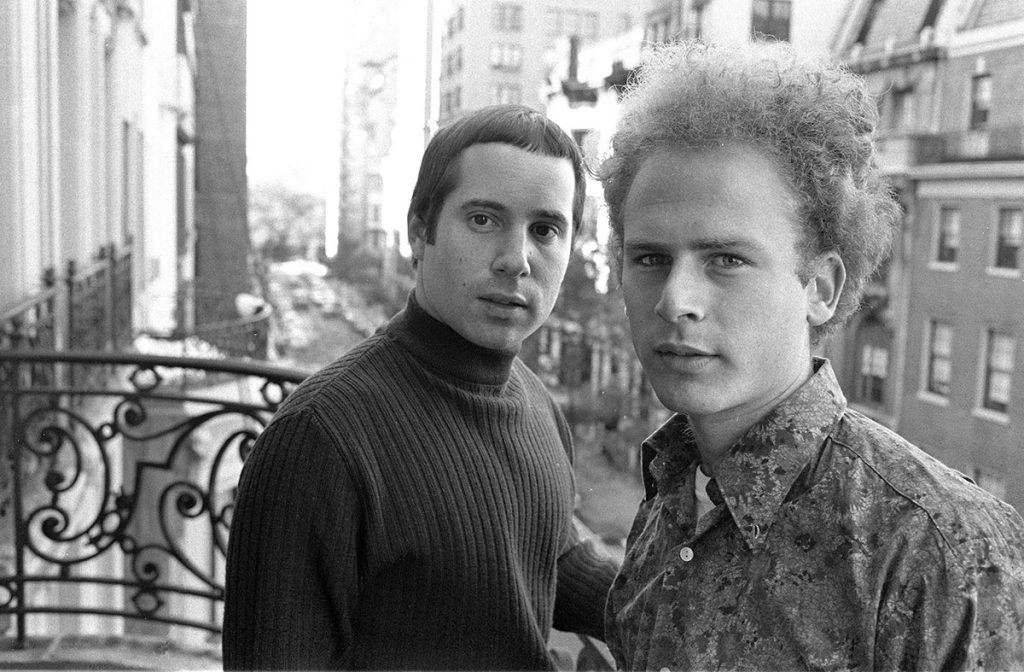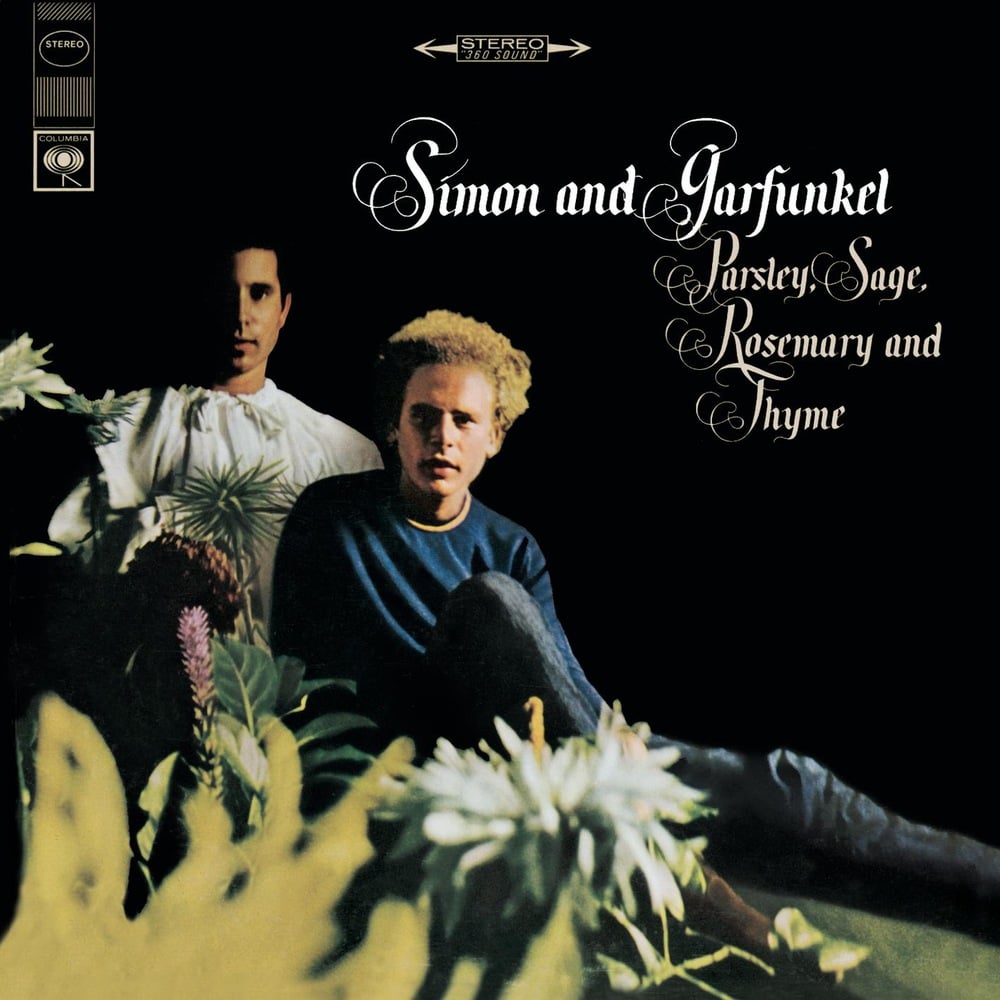Finally, here's Simon & Garfunkel in the list of 1001 albums you must hear before you die. Even though I'm too young to have lived through their career, the 1981 Central Park concert on TV rocked my childhood and the VHS tape has been played over and over.
In the vast musical landscape, some figures gracefully traverse the ages, touching the hearts of different generations. Paul Simon and Art Garfunkel, an inseparable New York duo, have built a body of work whose poetic richness and melodic beauty transcend time. A look back at a legendary duo that has left its mark on music history.

From the very beginning of their career, Simon and Garfunkel had a daring artistic approach. Their first songs evoked the rock ‘n' roll and doo-wop influences of their youth, but it wasn't long before their own folk sensibility became apparent. Their first album, “Wednesday Morning, 3 AM” (1964), already bears witness to this delicacy and poetic search that would continue to develop throughout their career.
It was with “Sounds of Silence” (1966) that the duo achieved international recognition, and that the two partners became icons. The song, which still resonates today as a hymn to contemplation and solitude, bears witness to an era marked by social and political upheaval. It was the first of many hits, including “I Am a Rock”, “Scarborough Fair” and “Homeward Bound”.
As the albums progressed, Simon and Garfunkel explored new musical frontiers, with a boldness that can be seen, for example, in the Latin foray of “El Condor Pasa” or the lush orchestrations of “Bridge Over Troubled Water” (1970). Their last opus as a duo reveals an exacerbated sensitivity, intoxicating vocal harmonies and an inspiration drawn from literature, painting or cinema.
Despite a split in 1970, due to tensions between the two artists and the desire to pursue solo careers, Simon and Garfunkel have left an indelible mark on popular music. Their occasional reunion at memorable concerts testifies to an intact chemistry and an undeniable complicity.
Simon and Garfunkel, a mythical duo, invite us to rediscover their musical universe, where poetry, enchanting melodies and multiple influences are combined. A tandem that continues to mark the history of music and that, more than fifty years after their debut, is still unavoidable.
The album Parsley, Sage, Rosemary And Thyme
Simon & Garfunkel's music never ceases to charm fans of refined and poetic pop-folk. In this vein, “Parsley, Sage, Rosemary and Thyme”, their third album released in 1966, is a true ode to the senses, tinged with an emotional depth that has lost none of its flavor over the years.
Sublimated by the duo's vocal and melodic mastery, the opus opens with “Scarborough Fair/Canticle”, a track with mysterious and bewitching accents. Adapted from a traditional English ballad, this song seduces by the beauty of its harmonies, which unfold like a hypnotic waltz on the themes of love, separation and the passing of time.
The album then unveils melancholic and intimate nuggets such as “Cloudy” and “For Emily, Whenever I May Find Her”, which illustrate the storytelling talent of the two companions. Their dreamlike universe, populated by ethereal characters, captivates and leaves a veil of nostalgia hanging over the whole opus.
But “Parsley, Sage, Rosemary and Thyme” is not limited to the confines of melancholy. The New York duo also explores lighter, sometimes satirical sounds. “The 59th Street Bridge Song (Feelin' Groovy)” is an invitation to carefree fun, with its catchy choruses and playful rhythm, while “A Simple Desultory Philippic (or How I Was Robert McNamara'd into Submission)” has fun depicting society's failings with biting irony.
Almost 60 years after its release, “Parsley, Sage, Rosemary and Thyme” has lost none of its grace and freshness. A true sensory elixir, the album transports us to the heart of Simon & Garfunkel's intimate and poetic universe, testifying to their ability to evoke emotion through pure melodies and delicately chosen words. A masterpiece that has stood the test of time without ever getting old.
Where does the album title Parlsey, Sage, Rosemary And Thyme come from?
The title of Simon & Garfunkel's album “Parsley, Sage, Rosemary and Thyme” has its origins in the traditional English song “Scarborough Fair”. This folk ballad dates back to the Middle Ages and evokes a medieval market that was held in the town of Scarborough, England. The lyrics of this song consist of a series of impossible tests given by a man to his beloved, and each test is interspersed with the refrain “Parsley, Sage, Rosemary, and Thyme”.
These four aromatic herbs are mentioned throughout the chorus, symbolising different virtues and emotions. Parsley is associated with love, sage with wisdom and strength, rosemary with fidelity and loyalty, and thyme with bravery.
The song Homeward bound
There are songs that, from the very first notes, evoke memories, emotions and landscapes. “Homeward Bound” is one of those timeless songs that have the power to transport us into a poetic and melancholic world.
Written by Paul Simon during a tour in England, the song accurately depicts the feelings of nostalgia and loneliness experienced by the artist far from home. The lyrics speak with touching sincerity of his longing to return to his roots, home and loved ones, as he wanders “through the stations, waiting for the train to take him home”.
I'm sittin' in the railway station
Got a ticket to my destination
On a tour of one-night stands
My suitcase and guitar in hand
And every stop is neatly planned
For a poet and a one-man band
The melodious chorus, carried by the harmonious voices of Simon and Garfunkel, echoes this quest for comfort and belonging, punctuated by the famous lines: “Homeward bound, I wish I was, homeward bound”. The song thus takes on a universal dimension, expressing with rare accuracy the experience of uprooting and estrangement, themes that still resonate today in an increasingly nomadic society.
The simple, uncluttered melody highlights the mastery of Paul Simon's writing, which combines a sense of poetry with the subtleties of pop-folk. The delicate and elegant guitar accompaniment reinforces the introspective character of the song and underlines the beauty of the intertwined voices of the New York duo.
The discreet and refined arrangements give “Homeward Bound” a soft and melancholic atmosphere that has seduced successive generations. This unforgettable ballad, which continues to leave its mark almost 60 years after its release, is a testament to Simon & Garfunkel's extraordinary talent and their ability to touch the hearts of listeners with timeless melodies and emotionally charged words.
Homeward Bound” is a true hymn to the search for self and the call of home, which, beyond its 1960s roots, has continued to inspire admiration and nostalgia among listeners around the world. An iconic song by the duo, it has made musical history and continues to resonate in the hearts of all those who long to find their way home.
Among the many covers of this song, I found this version by Cher from 1966 as well.
Where to listen to Parsley, Sage, Rosemary and Thyme?
- Listen to Parsley, Sage, Rosemary and Thyme on Spotify
- Listen to Parsley, Sage, Rosemary and Thyme on Deezer
- Listen to Parsley, Sage, Rosemary and Thyme on Youtube
